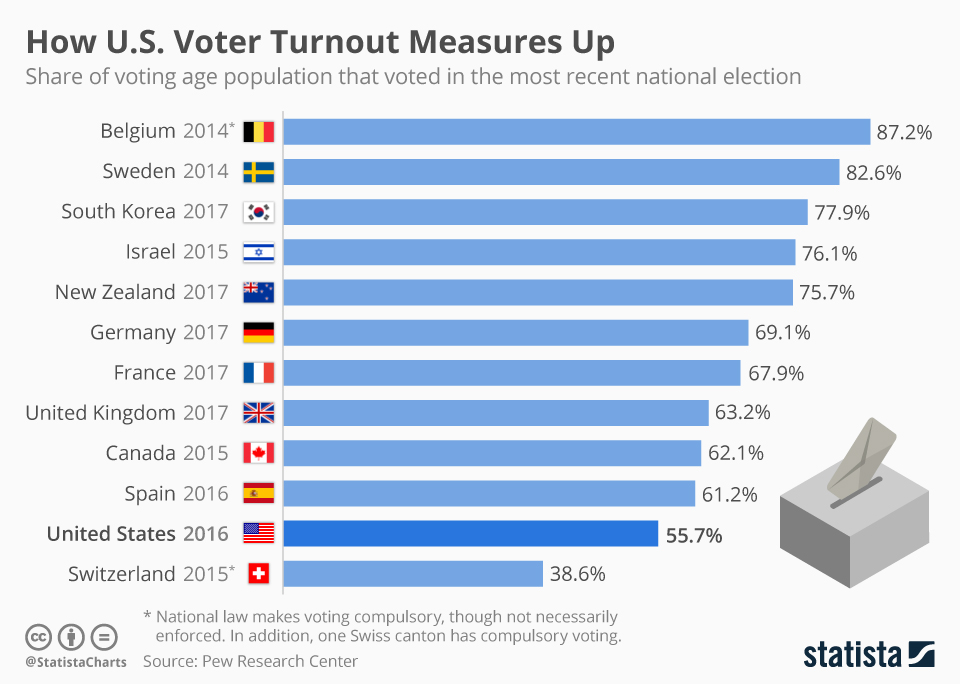These are the countries with the highest voter turnout

More than 46 million Americans cast their votes in advance. Image: REUTERS/Caitlin Ochs
The US midterm elections typically have a much lower voter turnout than presidential elections.
But this year, early voting exceeded that of many previous midterms, breaking records in multiple states.
An estimated 40 million Americans cast their vote ahead of election day, far surpassing the total early vote count of 27 million in 2014.
The midterms come two years in to a president’s term in office and determine which party controls Congress for the next two years.
The 2018 midterms, in which Democrats have taken the House of Representatives, while Republicans held onto a majority in the Senate, have been billed as a “first referendum” on Donald Trump’s presidency.

A Pew Research Center survey found that voter enthusiasm has been at its highest level for any midterm election in more than two decades.
Despite the unusually high early voter turnout for these much-anticipated midterms, the numbers still lag behind the 2016 presidential election, when more than 46 million Americans cast their votes in advance.
Even so, in that election, observers deemed overall turnout as low with only about 55% of eligible voters going to the polls. This percentage is even more stark when compared to other developed countries and voter turnout in recent general elections.

Belgium had a turnout of 87.2% in its 2014 election (although the law requires all eligible citizens to vote, the rules are not necessarily enforced). In 2016, Australia – which doesn’t appear on the chart – experienced the lowest recorded turnout since the introduction of compulsory voting in the 1920s.
Many countries that don’t have a compulsory voting system get strong turnouts. For example, Sweden (82.6% in 2014), South Korea (77.9% in 2017), Israel (76.1% in 2015) and New Zealand (75.7% in 2017).
Don't miss any update on this topic
Create a free account and access your personalized content collection with our latest publications and analyses.
License and Republishing
World Economic Forum articles may be republished in accordance with the Creative Commons Attribution-NonCommercial-NoDerivatives 4.0 International Public License, and in accordance with our Terms of Use.
The views expressed in this article are those of the author alone and not the World Economic Forum.
The Agenda Weekly
A weekly update of the most important issues driving the global agenda
You can unsubscribe at any time using the link in our emails. For more details, review our privacy policy.
